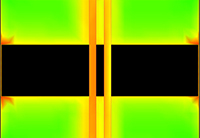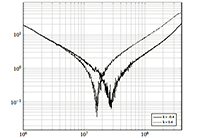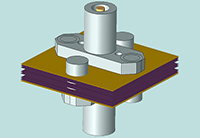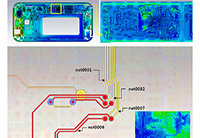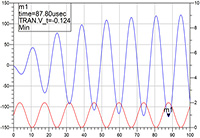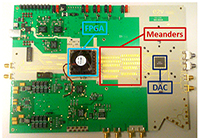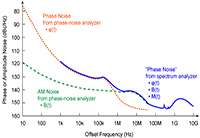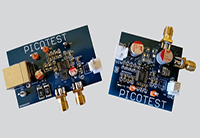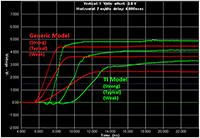|
As rated by reader views, here are the Top 10 Articles on Signal Integrity Journal for 2018. Thank you for your readership in 2018, and we look forward to bringing you many more great technical features in 2019! |
|
|
|
|
|
Split Planes and What Happens When Microstrip Signals Cross Them By Bert Simonovich This paper notes in detailed examples that with today’s high-speed designs, we can no longer restrict our thinking in terms of signal integrity, power integrity or EMC alone. We must consider all three disciplines and become educated about each of them to achieve successful designs.
|
|
|
Capacitor Coupling for Minimum Impedance By Anto Davis and Steve Sandler This article illustrates how a negative coupling coefficient produces a larger anti-resonant peak compared to a positive coupling coefficient, even though the equivalent inductance is lower. Learn more.
|
|
|
Via Characterization and Modeling By Z Input Impedance By HeeSoo LEE, Nathan Hirsch, and Orlando Bell Design engineers have traditionally used time domain reflectometry (TDR) as a tool to characterize and optimize via designs, yet the TDR approach comes with shortcomings such as demanding shorter rise-time step signal or larger bandwidth S-parameters, and inaccurate read-out on the via impedance. In this article, we propose a simple and effective Z-input impedance method that augments the traditional TDR method for characterizing and optimizing via designs in much faster speed systems.
|
|
|
RFI and Receiver Sensitivity Analysis in Mobile Electronic Devices By Antonio Ciccomancini Scogna, Hwanwoo Shim, Jiheon Yu, Chang-Yong Oh, Seyoon Cheon, and NamSeok Oh Receiver sensitivity and noise coupling to antenna are two major concerns when developing mobile devices such as smart phones and tablets. There are various causes of degradation of receiver sensitivity. However, most of the time they are due to the noise generated by digital signal harmonics on printed circuit board (PCB) patterns, which couple to the antennas. This article presents a methodology to predict noise to antenna coupling and antenna desense.
|
|
|
Target Impedance Limitations and Rogue Wave Assessments on PDN Performance By Steve Sandler A common design technique for power distribution networks (PDN) is the determination of the peak distribution bus impedance that will assure that the voltage excursions on the power rail will be maintained within allowable limits, generally referred to as the target impedance. In theory, the allowable target impedance is determined by dividing the tolerable voltage excursion by the maximum change in load current. Discover more.
|
|
|
Interfacing FPGA with High-speed Data Converter Using Parallel and Serial Interface By Marc Stackler, Andrew Glascott-Jones, Romain Pilard, and Nicolas Chantier The current trend for many applications requiring data converters is to get closer and closer to a full SDR (Software Defined Radio) system. While SDR architecture brings many benefits in terms of flexibility and SWaP-C (Size, Weight, Power and Cost) it often translates into higher bandwidth capability and is directly linked to the data converter sampling speed with the Shannon-Nyquist theorem.
|
|
|
Influence of Noise Processes on Jitter and Phase Noise Measurements By Gary Giust This article examines the key noise processes involved in measurements of jitter and phase noise, shows how these processes impact test results for various types of test equipment, and provides insight for interpreting these results.
|
|
|
Characterizing and Selecting the VRM By Steve Sandler VRMs and VRM controllers are often selected based on size, efficiency, price, or a relationship with the manufacturer. This often leads to a poor VRM selection, requiring additional engineering resources, greater time to market, as well as, higher BOM costs to correct the deficiencies. In this article, we evaluate the choices, define some useful figures of merit, and provide specific selection suggestions.
|
|
|
Overview and Comparison of Power Converter Stability Metrics By Joseph 'Abe' Hartman, Alejandro ‘Alex’ Miranda, Kavitha Narayandass, Alexander Nosovitski, and Istvan Novak Power conversion circuits with control loop(s) are everywhere in electronic systems. We must establish stability and performance metrics for control loops and their circuits. However, generally accepted metrics may not be good enough. Is a crossover frequency with 45 degrees of phase margin and 10 dB of gain margin enough? How can we relate phase margin to peaking in the impedance profile and transient noise requirements? This article aims to answer these and other questions.
|
|
|
Validating IBIS Models with Measurements By Thomas Rutkowski, Huy Nguyen, and Eric Bogatin We use IBIS models of drivers all the time in routine simulation. In this project, we compare the predicted results of the IBIS model supplied by the vendor, the results from a generic model, and measured results from a randomly selected part. The agreement to measurements is not within the 10% expected metric but is still remarkably close. We introduce a simple methodology to bring measured data from a scope into the HyperLynx simulation environment.
|



